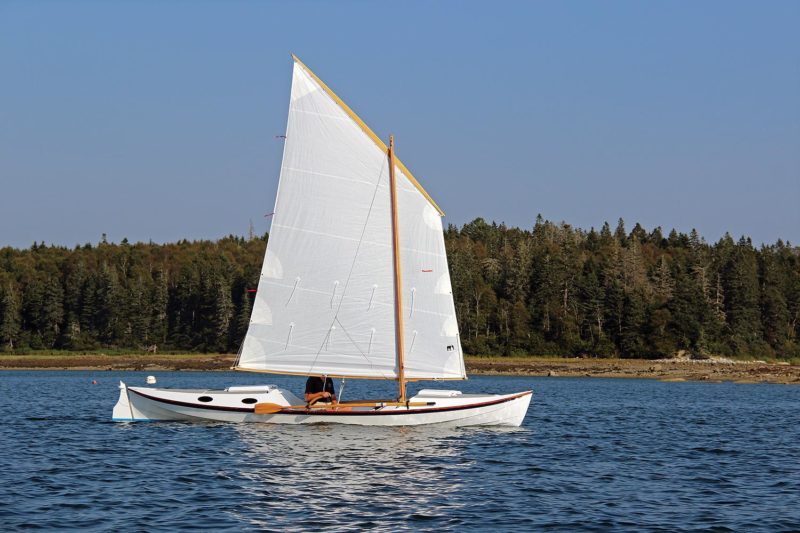 John C. Harris
John C. HarrisJohn C. Harris of Chesapeake Light Craft designed the Faering Cruiser for a client who had three firm requirements for his coastal voyager: The boat had to sail, its auxiliary power had to be provided by sliding-seat rowing, and it had to have sleeping accommodations beneath the deck.
This unusual 22′ pocket cruiser from Chesapeake Light Craft (CLC) is based on traditional inshore boats of the west coast of Norway, but the initial inspiration for it came from someplace far different from that. “The boat’s owner,” says CLC proprietor and chief designer John C. Harris, “was obsessed with Sven Lundin.” Lundin is the Swede who, in 1980, sailed his 20′-long BRIS II around Cape Horn, after attempting the voyage and pitchpoling in BRIS I (it means “breeze” in Swedish) on his first attempt in 1972. Lundin made other improbable voyages in improbable boats, espousing a philosophy of low cost, easy handling, shallow draft, and beachability. His boats also had no engines, and had to row reasonably well.
Harris’s customer did not intend to cross oceans, but rather wanted to make alongshore expeditions under sail and oar, and this posed a problem for the designer. He saw Lundin’s “pod”-style boats as well adapted for long offshore passages, but not so great for inshore work. His customer also wanted a sliding seat, which dictated a cockpit layout centered in the middle of the boat, which bumped the cabin from its traditional place. These constraints are what led Harris to the traditional boats of Norway’s Nordland county.
Nordlandsbåts, as these craft are called, are characterized by high, plumb ends, and sheerlines that sweep dramatically low amidships. The subtypes are named for the number of oars they carry: The small ones, faerings, have four single oars, while the larger fembørings have five pairs of oars. Harris had already designed a faering for stitch-and-glue construction, and saw an opportunity to stretch that hull to accommodate his customer’s wish for a sliding seat and cabin. The Norwegian vernacular boats held more precedent, for fembørings often have raised-deck cabins in their after ends, out of the way of the open middle working portion of the boat. And so the general form of the cabin fembøring guided Harris in the design of his new boat, which he poetically calls the Faering Cruiser. In the Norwegian tradition he might more accurately call it a toaering, for it has but one pair of 9′ sculling oars, which live permanently at the ready, resting in their oarlocks with blades strapped to the gunwales.
The oars posed a design problem, for the boom and mainsheet occupy the space through which the rower sweeps with each stroke. Harris solved this dilemma with lazyjacks, which lift the boom clear of the rower’s head. For rowing, the mainsheet must be unshackled from its deadeye and moved to a forward location, out of the way of the sliding seat.
The seat is a shop-made, drop-in unit that lives in the cabin when not in use. With the seat removed from the cabin, there’s room for a tired body to rest and read—but not much else. While the boat has room for a passenger on day trips, this is a solo sailor’s expedition boat. In fact, I’ve come to think of it as a great option for a frustrated kayaker who does not relish the idea of having legs immobilized for hours on end, or paddling hard into a breeze that could be providing motive force. In fact, it would be most helpful to view the performance of the Faering Cruiser against other expedition-style boats—particularly kayaks—than against performance daysailers. Because if you want a boat that’s dry and nimble and tacks on a dime, there are better options than this one. But if you want to go where kayaks go, but faster, with more gear, less exertion, and more excitement, then stay with me for a description of the new boat’s performance.
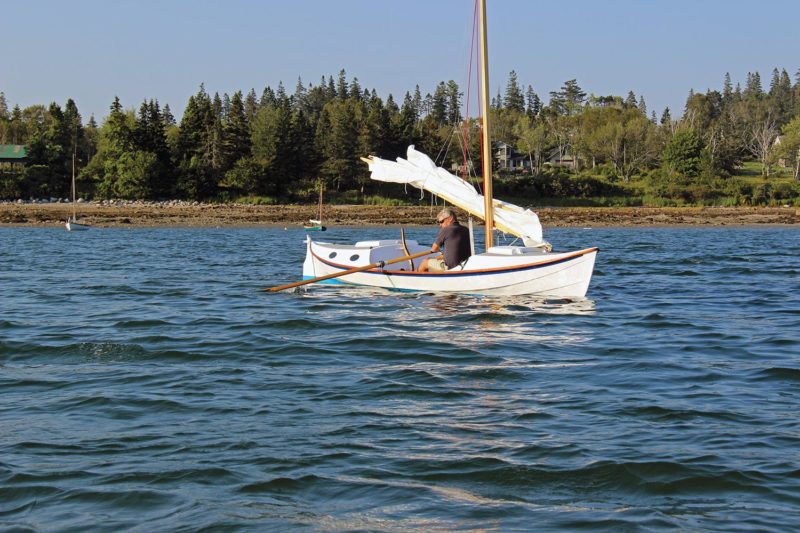 John C. Harris
John C. HarrisThe Faering Cruiser’s oars live in their oarlocks when the boat is underway, and the looms are strapped to the boat. The sliding seat assembly lives in the aft sleeping compartment, and is easily dropped into place.
When we stepped aboard the boat, the boom was cocked up high in the lazyjacks. Harris gave me a quick tour of the control lines, and then raised the sail with the lazyjacks still engaged. “Like all of these boats, you want lots of downhaul,” he said tightening the sail’s luff. He then lowered the centerboard, which has two control lines—one to hold it up, and one to hold it down—obviating the need for ballast to sink it, but obstructing its ability to kick up in the case of an accidental grounding.
Harris then departed in the dinghy, leaving me alone to test out the boat. He offered to cast me off from the dinghy, saving me from crawling forward on the narrow foredeck, but I declined, wanting to experience the boat fully. The narrow deck and the forward extension of the lug made for an awkward operation, but after lowering the lazyjacks I slithered out to the bow cleat and dropped the mooring pennant with my reputation intact, and it occurred to me that a mooring point closer to the cockpit would be a welcome addition for the soloist. I did not relish the thought of returning to the mooring under sail and, as we shall see, I furtively chickened out from doing so.
The Faering Cruiser’s long keel and relatively large lug sail make it go like a freight train while tracking dead straight, and it’s easy to see the joys of long inshore passages in this boat, the cabin packed with books and food. One must be mindful of the limitations imposed by that dead-straight tracking, however, when it comes time to change tacks. This boat is slow in stays, and really must be sailed deliberately through the wind, rather than slammed over. In fact, you can’t slam it over, because the rudder, way back there on the stern stem, is connected to the cockpit-mounted tiller via cables and quadrant. Detents in the system limit the swing of the rudder to about 45 degrees—an ample amount, but a limit one should be aware of, which I was on my second tack.
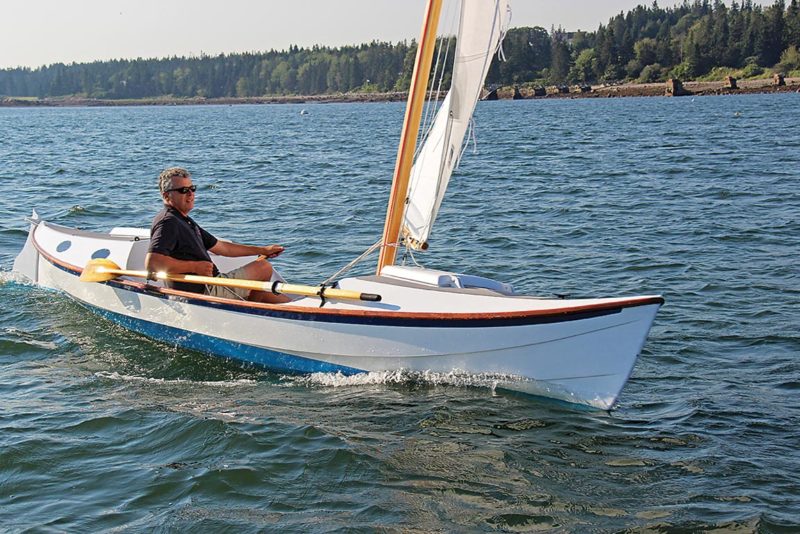 John C. Harris
John C. HarrisThe Faering Cruiser’s owner chose a lug rig for its ease of handling and low center of effort. Harris has drawn an alluring sloop rig, too.
I made my first tack to avoid a transient yacht sitting on a WoodenBoat guest mooring. The boat was slower in stays than I expected it to be, and not wanting to be the guy who T-boned a parked boat while shaking down a new design, I abandoned my experiment, grabbed an oar from its holster, and took a few strokes to get her through. On later tacks with more searoom, I learned that the boat always had enough way to carry through stays, and that a touch of backwind in the big lug sail will speed things along. I also learned that, in this breeze, I much prefer to jibe this boat. The maneuver is faster than tacking, and is easily controlled in the usual way by letting the mainsheet run after the jibe, and holding the helm hard over as the boat comes around, so by the time the boom crosses, the boat is on the new reach and there’s a bit of a luff in the sail. That’s called a Hudson River jibe, I’m told. Running dead-downwind, the boom of this unstayed balance-lug rig can be let to run forward like a weathervane—a depowering maneuver.
The mainsheet has a handy cam cleat where it exits the block. It was gusting 18–20 on the day of my outing, and the sheet kept cleating itself when I trimmed, because of the angle. I’d be inclined to do away with that cleat, and instead have a post or horn cleat that the sheet could be turned around, but not belayed. I almost dumped the boat in one puff, and I do believe it would have been fun if I had, but I just wasn’t in the mood for such shenanigans that night. I did fill the cockpit with water, and was delighted and relieved to see the angled-aft drain tubes work as intended.
I took a reef to see how that system works. Quite simply, it did so quickly and flawlessly. The tack line and halyard were handy to the helm, and the clew line was led far enough forward on the boom to be taken in comfortably. There were nettles, too—those small lines tied into the sail that allow the excess to be rolled and secured into a nice neat bunt. Wanting to keep my center of gravity low in this breeze, I deemed them unnecessary and skipped them without penalty. On a long voyage I might have tidied them up for the sake of satisfaction.
When it came time to put the boat up, I told Harris I was dropping the sail to test out the rowing rig. But the truth is that I didn’t want to crawl out onto the foredeck to pick up the mooring under sail. It was a nice row back once Harris reminded me to raise the centerboard, which was very effectively keeping me from heading into the wind. My performance in the sliding seat was awkward, but that was me and not the boat, as it’s been years since I rowed like this and it was choppy that night. I do believe I could establish a proper rhythm in a flat calm—the most likely scenario in which one would row this boat—and could pace myself for miles. Harris reports having made a couple of knots into a 12-knot headwind, which bodes well for the boat’s ability to exit a crowded harbor under oars.
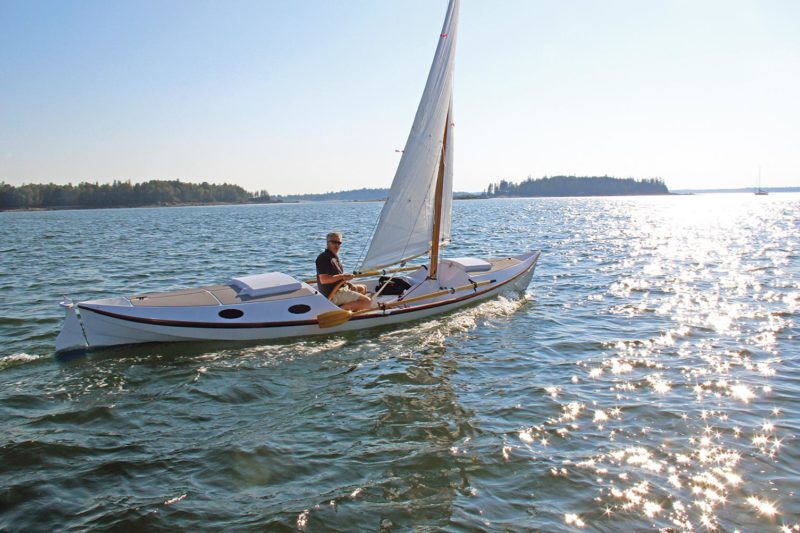 John C. Harris
John C. HarrisWhile slower in stays than an average sailing dinghy, the Faering Cruiser tracks beautifully. One can imagine long days island-hopping on Maine’s Island Trail.
A solo builder spent about a day assembling the computer-cut hull of the prototype Faering Cruiser. The hull was planked in 9mm okoume bent around bulkheads and frames and stitched together along the laps—the same system CLC uses for its kayak designs. It’s an approachable method that has made boatbuilders of many first-timers working in unlikely places, such a studio apartments, dormitories, and small living rooms.
That day of assembly is a rewarding first step, but its time poses a deceiving number: The boat’s entire construction took 700 hours, and that included the strengthening, or “filleting,” of joints with thickened epoxy, the construction of the cabin, fiberglassing, the finishwork and fitout, and the rigging.
On his blog (at www.clcboats.com), Harris initially expressed an unwillingness to offer a kit for this boat, but the response to it has been positive and he’s recognized the interest of “a few rugged latter-day Vikings.” The price starts at about $4,500, and Harris recommends a skill level of intermediate and up. If you’ve built a few kayaks and would like to expand your cruising range and adrenaline output, this boat deserves a close look.
For more information, contact Chesapeake Light Craft, www.clcboats.com.
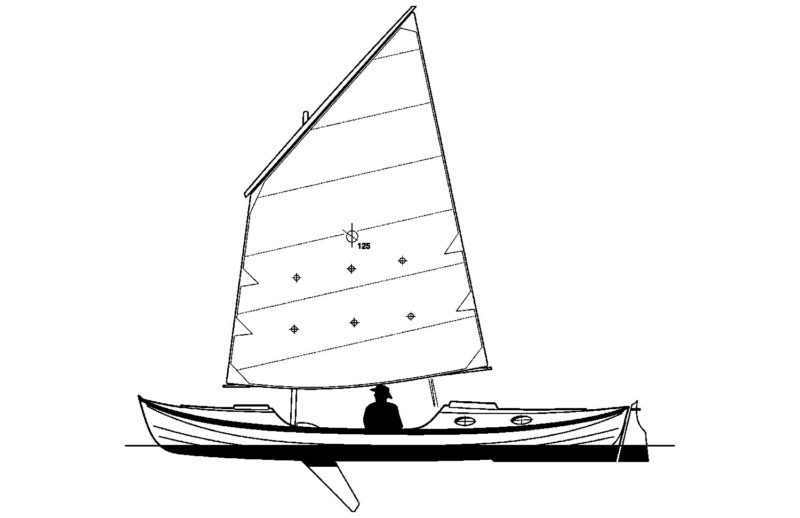
The Faering Cruiser’s long, straight keel and ample skeg make for good tracking, while near-circular sections offer minimal wetted surface for fast sailing and rowing. The accommodations (bottom profile) are small but surprisingly comfortable—even for the mildly claustrophobic.
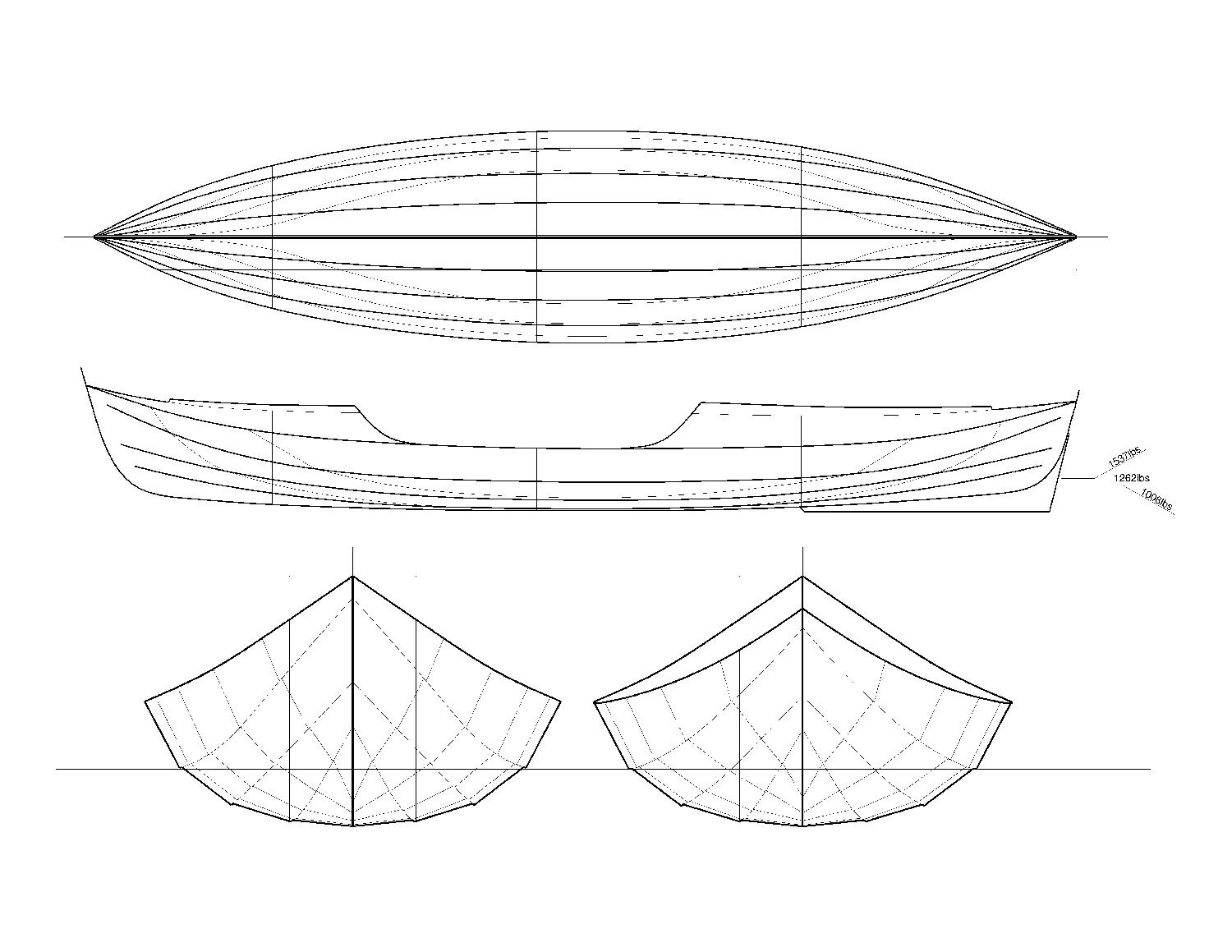
CLC Faering Particulars:
LOA 22’6″
LWL 21’1″
Beam 4’10”
Draft (board up) 8″
(board down) 36″
Trailer weight 530 lbs
Max displacement 1262 lbs
Sail area (lug) 125 sq ft
Sail area (sloop) 143 sq ft
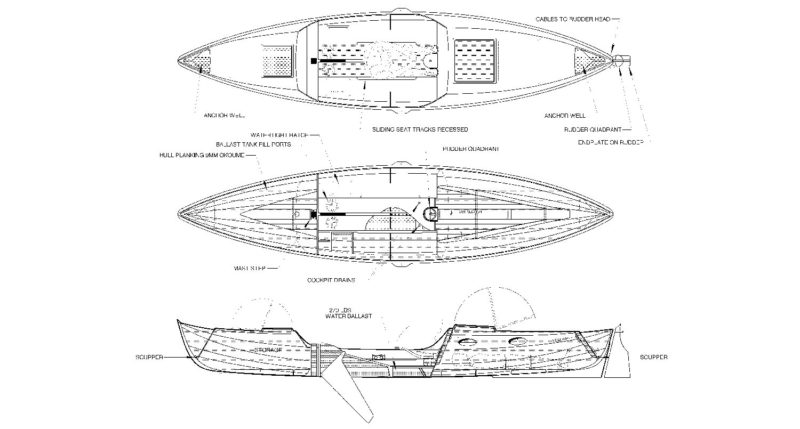
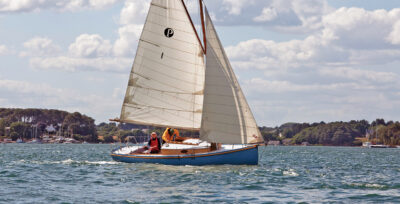
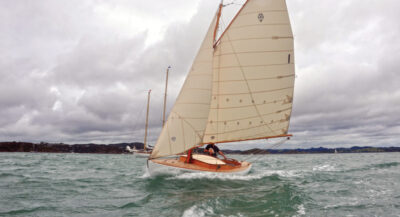
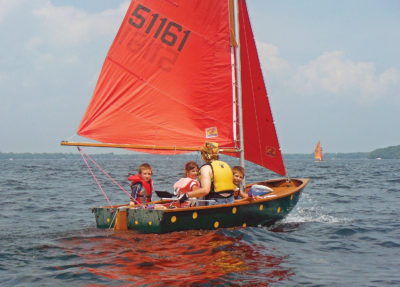
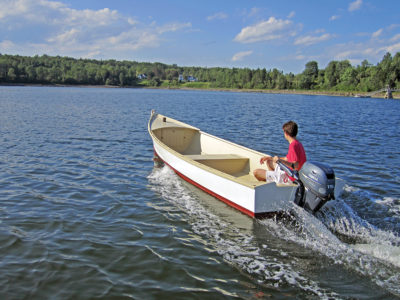
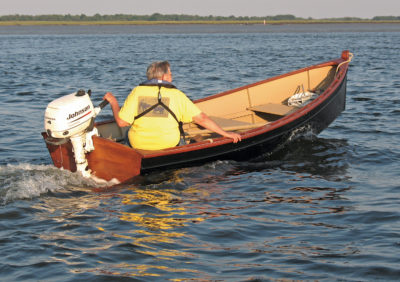
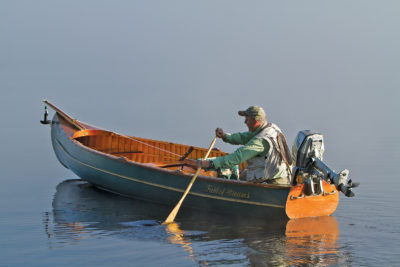
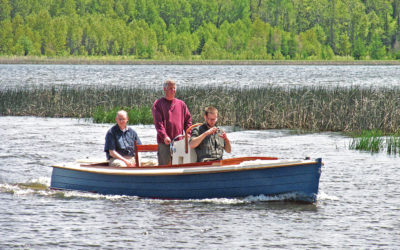
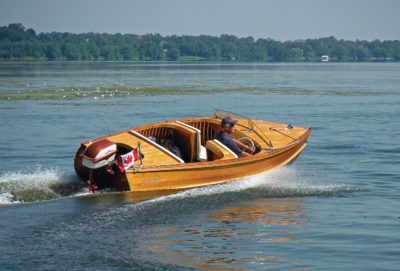
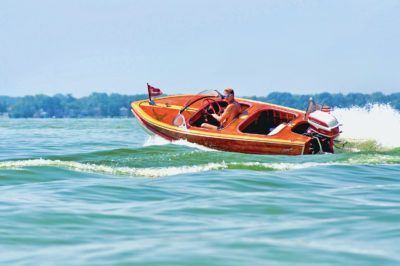
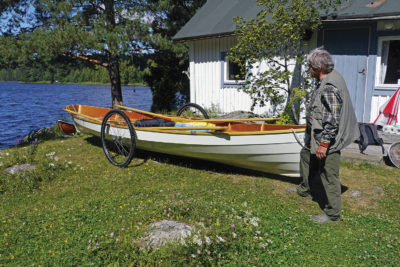
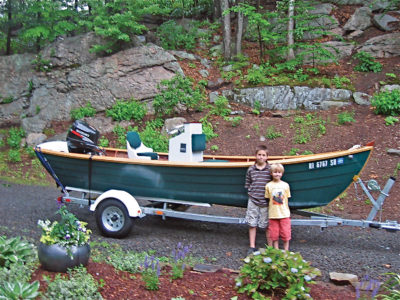
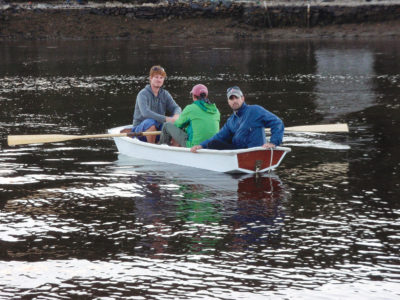
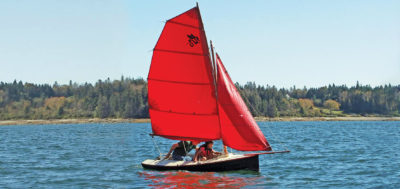
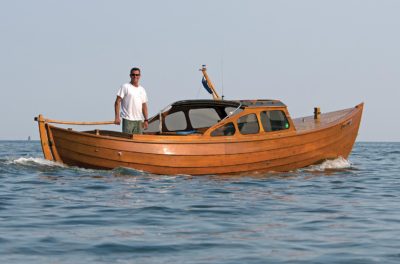
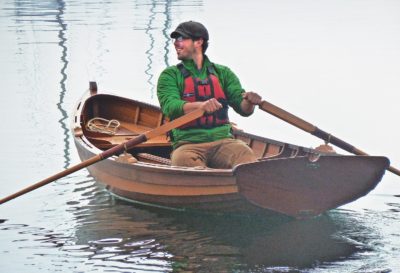
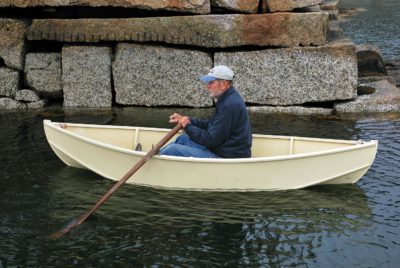
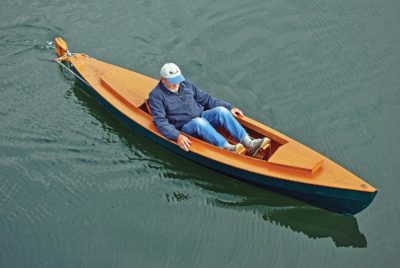
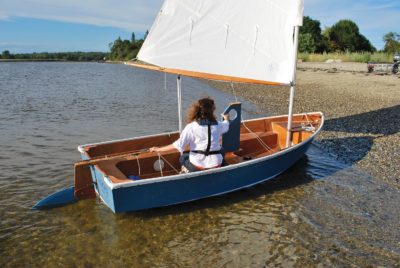
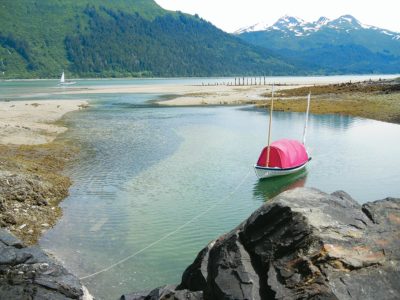
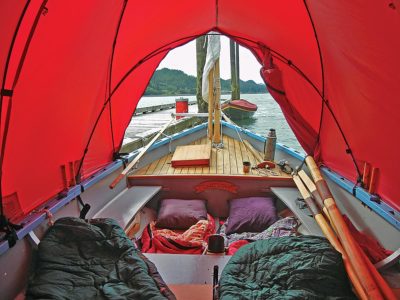
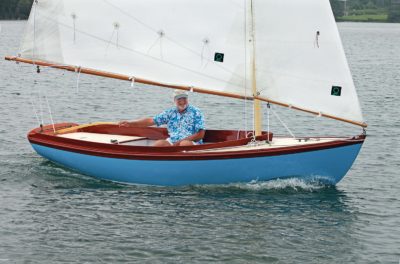
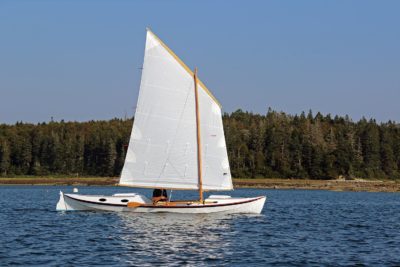
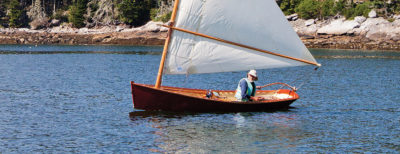
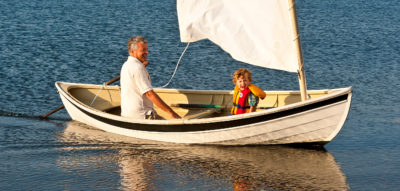
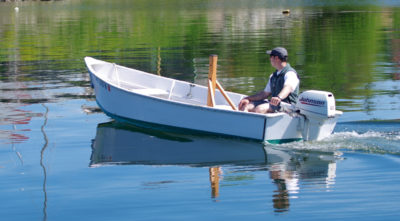
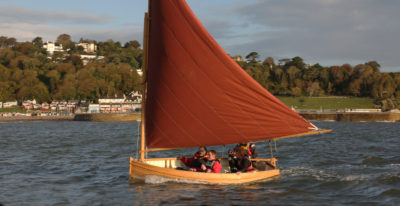
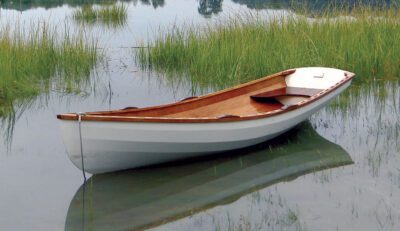
Been kicking this around for a few years now. Too bad the Faering is not couple friendly. This design could be the perfect weekender in the Boston Harbor area with its many islands, rivers and intertidal areas to explore. Usually summer conditions here would lend just enough of rowing for the usually flat, calm mornings to early afternoon for a workout at the same time. Close but no cigar.
Intriguing. Would like to check out study plans.
Make sure to look at the Angus Row Cruiser if you like this boat. Each have their pros/cons.